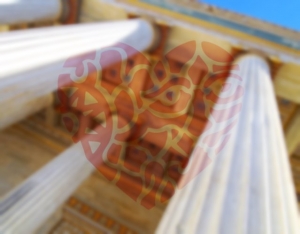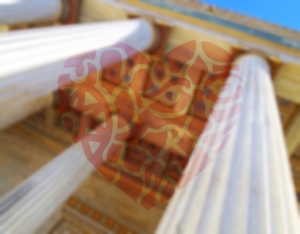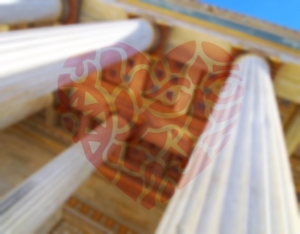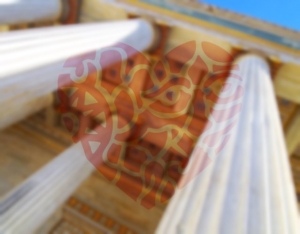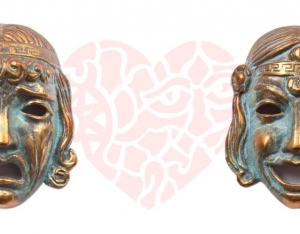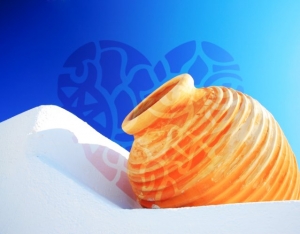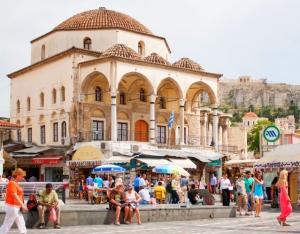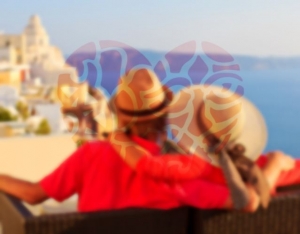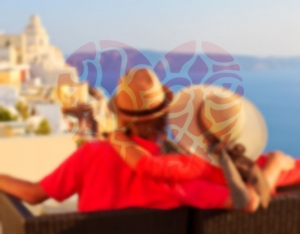Thodoris Bgenopoulos
The Museum of Cycladic Art is in the center of Athens, about 400 meters from Syntagma Square. The museum is housed in a specially designed building on the Neophytos Doukas street. Since 1991 it acquired a new wing in the stunning neighboring neoclassical Stathatou Palace, which is directly connected to the original building.
Established in 1986, the museum was originally built in order to host the Cycladic & Ancient Greek Art Collection, property of Nikos and Dolly Goulandris. It was later enriched and continues to be constantly enriched with new collections and donations.
The Cycladic Art Museum is dedicated to the ancient civilizations of Greece and Cyprus, with special emphasis on Cycladic Art of the third millennium. Among the works of Cycladic Art, what stands out is a total of marble figurines depicting women that served as inspiration for many contemporary artists.
The museum's collection of Ancient greek Art covers the period from the Brozen Age (2nd millennium BC) to 395 AD. It includes, among others, ceramic exhibits, bronze and gold objects and coins from Cyclades.
Cycladic Art Museum: Address Neophytos Doukas 4 / Vasilisis Sofias and Herodotus 1, Athens
More information concerning the Cycladic Art Museum can be found in www.cycladic.gr and the number 210 7228321.
The National Archaeological Museum is very close to Omonia Square, in Patission Street.
The National Archaeological Museum is the largest museum in Greece and one of the most important in the world. In its halls, over 11 000 exhibits of unique beauty and immense archaeological value present the history of the ancient Greek civilization. While it is unfair to single out any of the exhibits, among the most famous include the Golden death mask of Agamemnon and the famous Antikythera mechanism, perhaps the oldest computer in the world.
The National Archaeological Museum has five large permanent collections;
- The Collection of Prehistoric Antiquities, with findings from the civilizations that developed from the 6th millennium up to 1050 BC (Neolithic, Cycladic, Mycenaean) but also from the prehistoric settlement in Cape Thira.
- The Collection of Sculptures, depicting the evolution of ancient greek sculpting from the 7th century BC to the 5th AD.
- The Vase and Minor Objects Collection, with representative works of ancient Greek pottery, which includes the Stathatou collection, a corpus of petite art objects.
- The Metallurgy Collection, with many original sculptures and miniatures.
- The Egyptian and Near Eastern Antiquities Collection with works of art, dating from 5000 BC to Roman times.
What is more, the museum hosts temporary exhibitions with findings from all over Greece.
In the south wing of the museum, the Epigraphic Museum is also housed and is probably the largest of its kind in the world. It is a house for over 13 000 inscriptions, mostly Greek, from antiquity to the early Christian times.
In short, you would be a fool to visit Athens and forget to pay a visit to the National Archaeological Museum.
National Archaeological Museum: Address, Patission 44 Street, Athens.
More information concerning the National Archaeological Museum can be found inwww.namuseum.gr and the number 213 2144800.
The New Acropolis Museum is just below the Acropolis with unique views of the holy rock.
The museum was constructed after an international contest, in which Bernard Tschumi's and Mixalis Fotiadis' architecture firms won. The New Acropolis Museum opened its doors in 2009 and from then on thousands of people from all around the world visit it daily.
The New Acropolis Museum houses all the findings from the site of the Acropolis, which are findings of great beauty and priceless archaeological value. Among others, the visitors will be at a loss in front of the five impressive caryatids and the vacancy among them, waiting for the sixth Caryatid to return home from the British Museum.
At the last level of the museum is the Parthenon gallery, where all sculptures of the monument are exposed. Thanks to the special design of the museum, visitors can enjoy the exhibits while having visual contact with the Parthenon itself. The original sculptures are combined with the copies of those that are in museums abroad, so that the visitor can have for the first time a complete understanding of the Parthenon's sculptural decoration in its entirety.
The New Acropolis Museum has an excellent café restaurant with views to the Acropolis, as well as gift shops that sell items with themes from the Acropolis and its temples. Moreover, in the museum spaces many events are organized that ase related to the Acropolis and generally Ancient Greece.
New Acropolis Museum: Address, Dionysiou Areopagitou Street 15, Athens.
More information concerning the New Acropolis Museum can be found in www.theacropolismuseum.gr and the number 210 9000900.
The first museum to house the findings from the Acropolis was built in 1874 upon the sacred hill, southeast of the Parthenon. Although the museum was expanded in 1953, its premises were not sufficient to accommodate the findings and so it was decided to build the new Acropolis Museum. Since 2009 that the new Acropolis Museum was inaugurated, the Old Acropolis Museum ceased to operate.
If you love theater and want to watch as many performances as possible, in Athens you will find a small theatrical paradise.
Besides, the city that gave birth to theater and ancient tragedy has a glorious heritage that defends worthily. In Athens there are more than 100 theaters and theatrical stages that every year present all kinds of shows.
A key pillar in the theatrical world of Athens is the National Theatre (www.nt.gr). The National Theatre counts already a century of life and since its first day it aimed to promote intellectual cultivation through the art of theater. With excellent productions in Athens, throughout Greece and abroad, the National Theatre caters for the cultivation and dissemination of the theatrical art.
In Athens you will find at least one theatrical performance matching your taste. Sure thing!
Athens is a city that loves the arts and that is prevalent already from antiquity.
Besides, Athens itself is a permanent art exhibition, with the Acropolis above and the ancient monuments emerging in almost every corner.
Where should one start from? The National Gallery of Athens, the Contemporary Art Museum, the Benaki Museum, the Museum of Cycladic Art and the Frissiras Museum, are only a handful of the must-see museums for those who adore art.
Companion in Athens' daily effort to support the arts, are the hundreds of galleries and exhibition spaces that host artworks by renowned and promising artists.
This effort is also supplemented by many Art spaces such us Technopolis (www.technopolis-athens.com) and Athinais (www.athinais.com.gr ).
And following the indoor spaces, there are several open-air.
Each square, park and many streets are decorated with statues and other works of art, classical and contemporary, aiming to remind citizens and visitors of the enormous cultural tradition of Athens.
Apart from the permanent works, in the streets of Athens you will occasionally stumble upon periodic exhibitions, artistic interventions and several performances or happenings that are definitely worth your time.
For those who love music, Athens is a vibrant example that defends its great cultural heritage, while having a plethora of options that satisfy even the most demanding visitor, .
Athens has an exquisite concert hall, which hosts leading internationally renowned artists from all music genres, with a slight preference for classical music. More information concerning the Athens Megaron Concert Hall you can find inwww.megaron.gr and the number 210 7282000.
Apart from the Megaron Concert Hall there is also the Greek National Opera(Ethniki Lyriki Skini) with a great repertoire of works from the world of opera and ballet. More information concerning the Greek National Opera can be found in www.nationalopera.gr and the number 210 3662100.
Greece and of course Athens, is worldwide famous for its typical Greek music and the bouzouki. In Athens there are many places where you can live a different musical experience and have fun the way Greeks do. Here you can learn more.
If you do not want to try the bouzoukia experience, Athens has a lot more. No matter the kind of music you like, it is a fact that somewhere in the city there is at least one live stage especially for you. More information on Athens' music stages you can find here.
Music events in Athens are organized everywhere and at any given opportunity. More information can be found here.
Take one thing for granted: your visit to Athens will be effortlessly accompanied with music.
The Tzistarakis Mosque is in Monastiraki Square and was built in 1759 by the Turkish voivod Tzistiraki. Tzistarakis used materials from old buildings, while the legend has it that he did not hesitate to demolish the 17the from the columns of the Temple of Olympian Zeus for this purpose. This was considered a bad omen, for both Greeks and Turks, and later, when a plague broke, people's outrage erupted and Tzistarakis was deposed.
After the Greek Revolution the building ceased to be used as a mosque. Today, it is a part of the Greek Folk Art Museum and houses an excellent collection of ceramics.
Tzistarakis Mosque: Address, Areos Street 1, Monastiraki Square.
The First Cemetery is the oldest cemetery in Athens, located in a 5 minutes walk from the Temple of Olympian Zeus, in the area of Metz that is right behind the Panathenaic Stadium.
It was established in 1834. The First Cemetery is the resting place for several very important personalities of Greece . Prime ministers, archbishops, soldiers, artists and generally people who played an important role in the Greek history are buried here.
Many of the tombs are works of famous sculptors and are themselves great works of art. Among them, the most known is Chalepas' famous Sleeping Female Figure. The statue stands at the tomb of Sophia Afentaki and depict her in such a realistic way that it looks as if she has fallen into a deep sleep.
Although it might seem macabre to some, a walk on the premises of the cemetery, is a tour through the Greek history and its eminent figures.
Omonia Square is located at the point where most of the main streets of Athens begin (Stadiou, Panepistimiou, Piraeus, etc.).
In the original town plan of Athens, the area of the square was intended to host the palace of King Otto. Since this failed to happen, the building of a church was decided. Yet, not enough money were found eventually, so they finally decided to create a square.
This square was formed in 1846. It was initially called the Palace Square and later Othonos Square. In 1862 it took its current name as Omonia Square. There, the two dominant political parties of the era swore concord (=omonia) and were reconciled after a series of bloody attacks.
Over the years the square has changed many times look and shape. In its center occasionally fountains, plants and statues have been found. In the first half of the 20th century, Omonia Square was the meeting place for residents of the province who came for the first time to Athens.
The heavy traffic coupled with the gradual degradation of the area, made Omonia Square lose the square-character it once had and now it looks more like a crossroad and transport hub.

